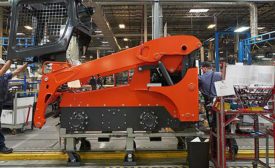News
Factory will supplement production at Volvo's plants in Pennsylvania, Virginia
Read More
Automated Assembly Systems
Navigating the Future of Test and Assembly: The Imperative for Automation Intelligence
Assembly and test systems must have the ability to gather and analyze significant amounts of data at each step of the manufacturing process.
April 10, 2024
Aerospace Manufacturing
Karman to Supply Critical Subsystems for NASA's X-59 Aircraft
The X-59 is NASA's first step in achieving quiet supersonic flight.
April 4, 2024
Never miss the latest news and trends driving the manufacturing industry
Stay in the know on the latest assembly trends.
JOIN TODAY!Copyright ©2024. All Rights Reserved BNP Media.
Design, CMS, Hosting & Web Development :: ePublishing










